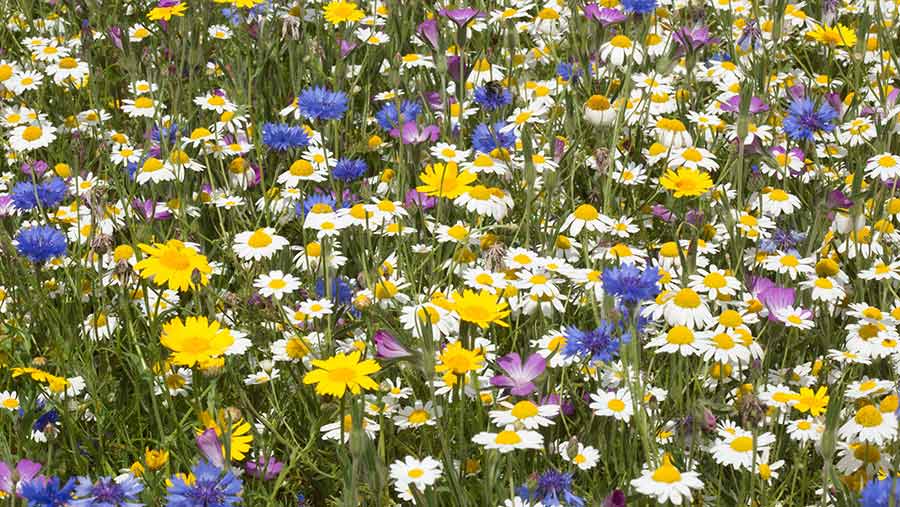RSPB widens farm certification scheme for nature recovery
 © Tim Scrivener
© Tim Scrivener An arable farm certification scheme focused on nature recovery and improving biodiversity has been expanded to the dairy, livestock and horticulture sectors as part of the RSPB’s conservation efforts.
Farmers signed up to the wildlife charity’s Fair to Nature scheme create habitats for wildlife and insects on at least 10% of their farmland, while also managing soils and inputs in more sustainable ways that are supportive of nature.
The RSPB says expanding the arable scheme, which launched in 1985, so more types of farmers can apply is a “vital step” to help reverse biodiversity loss in the UK.
See also: RSPB demands tighter pesticide controls to protect wildlife
Mark Varney, head of Fair to Nature, said: “Over recent years in the UK, we’ve seen the disappearance of half of our native farmland wildlife and witnessed the ecosystems we all depend on for our food come under threat. Put simply, without nature there is no food.”
Food brands and supermarkets which support the scheme agree to buy from certified farms and can display the Fair to Nature logo on the packaging of certified products.
Mr Varney added: “Fair to Nature does exactly what it says on the label and keeps consumers coming back, safe in the knowledge that they can trust a standard guaranteed by science and certified by the RSPB.”
Benefits for farmers
There is no set price premium for farmers within the scheme, but Mr Varney told Farmers Weekly that this should not deter take-up.
“There is a discussion whether we should do something like that, like Fair Trade does, but that raises questions of administration and interfering with farmers’ trading relationships, which we don’t get into.
“The benefits that we think will come for farmers is the access to markets by the brand owners wanting to buy in that way.
“The secondary benefits that come from farming in a more nature-friendly is the increased pollinators and the beneficial insects that come about from having good habitats around farms.”
Habitat requirements
The type and number of habitats required to make up the 10% area on-farm are based on scientific research, along with the six key elements advocated by the Farm Wildlife partnership, a coalition of groups that provides management advice for wildlife on farmland.
- Semi-natural habitats in good ecological order (no minimum percentage, but counts towards the 10%)
- Flower-rich habitats (minimum 4%)
- Seed-rich habitats (minimum 2%)
- Wildlife-rich field boundaries and margins (minimum 1%)
- Wet features (one feature/100ha, with an average 25sq m)
- Other in-field habitats (no minimum)
Farmers are inspected to ensure standards are being met and to assess the quality of habitats on the farm.
The comprehensive list of certification standards covers conservation and habitats, as well as management of soils, carbon, livestock, pesticides, fertiliser and manure, and water.
